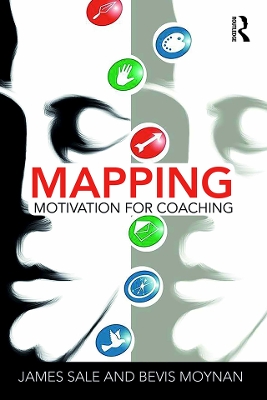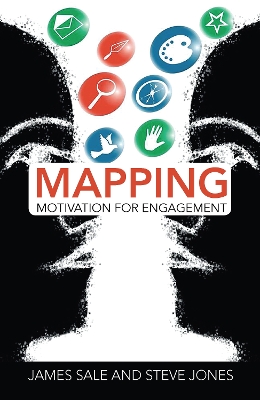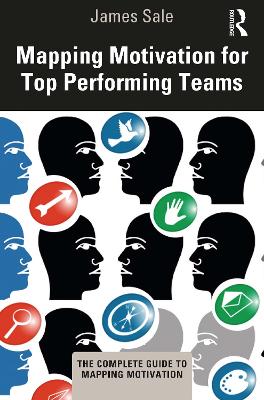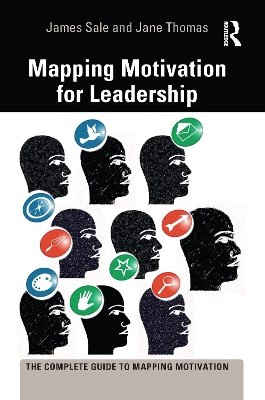The Complete Guide to Mapping Motivation
4 total works
Mapping Motivation for Coaching, co-written with Bevis Moynan, is the first of a series of six books that are all linked to the author's Motivational Map toolkit. Each book builds on a different aspect of personal, team, and organisational development. This book is a practical guide to understanding how personal and career development is underpinned by motivation, and how coaching and mapping are perfectly complementary activities. More specifically, it shows how using Motivational Maps within an accepted coaching framework can not only accelerate the process in order to achieve results for the client more quickly, but also go deeper, both in mutual understanding and also the possibility of facilitating a successful outcome; for the client not only needs to understand their issue more effectively through the coaching process, but also needs to be motivated to want to take significant action to deal with it.
Understanding, then, is one thing, but having the energy for follow-through is another, and it is precisely in this area that combining Maps with coaching techniques is so powerful. This highly original approach will enable all coaches everywhere in the world to get into the heart of their clients’ issues faster, better, and be able to help them solve these issues more easily.
Employee engagement is undeniably a crucial focus point for organisations in the twenty-first century, with motivation comprising the often missing, but vital, component of the developmental mix. Mapping Motivation for Engagement advocates a new paradigm for the twenty-first century: away from hierarchies and command-and-control management styles, towards a bottom-up approach in which the needs and motivators of the employees take centre stage.
Co-written with Steve Jones, this is the third in a series of books that are all linked to the author James Sale’s Motivational Map diagnostic tool. Each book builds on a different aspect of personal, team and organisational development. This book is a practical guide to the complexities of understanding and dealing with engagement in modern organisational life. Along with clear diagrams, reflective points, activities and a comprehensive index, the book provides free access to the online Motivational Map tool to facilitate a greater understanding of the contents. Drawing on copious amounts of the latest research, as well as models like the Macleod Report for the UK government, this book shows how Mapping Motivation can play a significant and crucial role in making engagement a reality, instead of a dream.
Mapping Motivation for Engagement is a stimulating and thought-provoking read for a wide audience including, but not limited to, trainers and coaches working in management and motivation, experts in human resources, internal learning and development and organisational development as well as change and engagement consultants and specialists.
Mapping Motivation for Top Performing Teams is the final volume in a series of books that are all linked to the author's Motivational Map toolkit. Each book builds on a different aspect of personal, team and organisational development.
This book, using the Motivational Map, the Team Motivational Map, as well as the Organisation Motivational Map, is a practical guide to understanding how team dynamics and success are hugely influenced by motivational factors, which are not usually taken into account. The book is a deeper exploration of team mapping which occurs in Chapter 6 of Mapping Motivation (2015), Chapter 6 of Mapping Motivation for Engagement (with Steve Jones, 2019), and Chapter 6 of Mapping Motivation for Leadership (with Jane Thomas, 2020). But whereas these chapters only touched on specific aspects of team dynamics, this book covers the issues more comprehensively; it also attempts to avoid replication of materials, although there are bound to be small overlaps. It covers not only how motivations affect team productivity and how this can be boosted through targeted Reward Strategies, but also how ‘mapping’ provides profounder insights into the four key characteristics of top performing teams: the clear remit, vital interdependency, strong belief, and real accountability. How Motivational Maps covers these areas, we believe to be original, eye-opening and effective in the management of change. Further, as always with Motivational Maps, its language and metrics raise self-awareness at an individual and team level, and so can help resolve conflicts through its common and non-judgmental language.
Managing teams is the key skill of managers: thus this book is a handbook for managers everywhere who wish to excel at management, for without bringing their teams on board (i.e. motivating their teams), they are not effectively managing.
Mapping Motivation for Leadership, co-written with Jane Thomas, is the fourth of a series of seven books that are all linked to the author’s Motivational Map toolkit. Each book builds on a different aspect of personal, team and organisational development.
This is a practical guide to leadership in the 21st century and builds on the ‘4+1’ model outlined in the author's original book Mapping Motivation: Unlocking the Key to Employee Energy and Engagement. There is an increasing body of evidence, that the single most important aspect of being a leader relates to managing emotions effectively, and this management goes way beyond simply ‘understanding’ emotional intelligence; it is in fact a practice and one that is intimately connected with personal development and growth, and with energy. Energy, as Mapping Motivation made clear, is synonymous with motivation. The effective leaders of tomorrow will be those who understand their motivators, who regularly measure their motivators, sustain and replenish and maximise their motivators, and who do the same for their employees.
Clearly, there is a link here with the book on engagement, for leaders who do so will engage their employees. However, this book not only covers the motivational side of leadership, but also explores in detail the skill sets necessary in the ‘4+1’ model: thinking skills, action skills, team skills and motivational skills plus that indefinable ‘something’ that is a commitment to personal development, so that we as leaders are not trying to solve today’s problems with yesterday’s training as our only internal resource.



